Supply Chain 3.0: the US ambition of Taiwan businesses
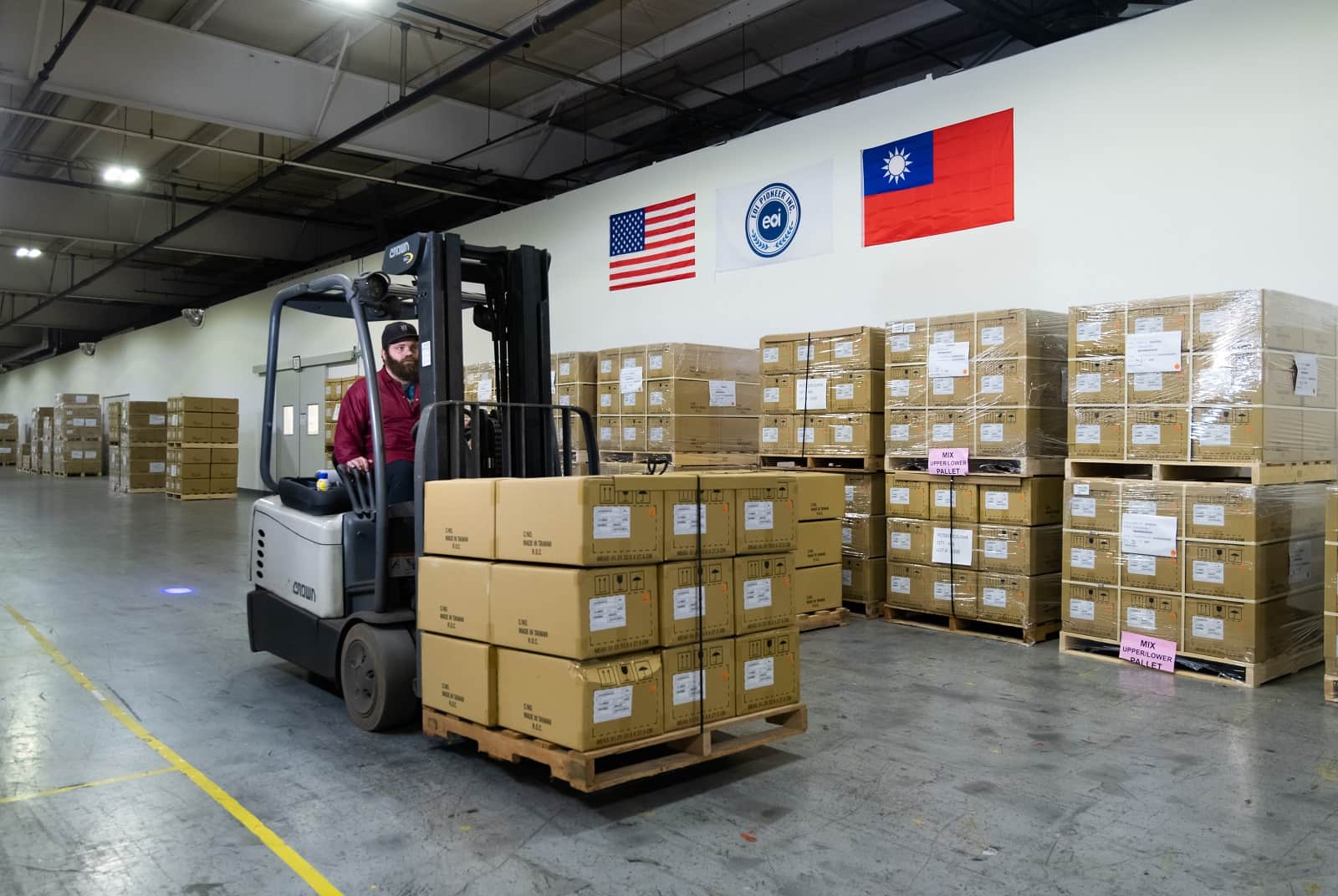
Source:Ming-Tang Huang
The global supply chain disruptions emerge as a key national security factor, forcing companies to shift production closer to their major markets. Chip foundry TSMC is not the only Taiwan company venturing into the United States. How are Taiwanese businesses seizing this opportunity to redraw their manufacturing maps?
Views
Supply Chain 3.0: the US ambition of Taiwan businesses
By Ching Fang WuFrom CommonWealth Magazine (vol. 761 )
In mid-October, the Taiwan External Trade Development Council (TAITRA) held its first-ever Taiwan Expo Show in the United States, showcasing leading technologies and products from Taiwan in the electric vehicle, 5G, smart fiber, and aerospace fields. The exhibition was held at the Ronald Reagan Building and International Trade Center in Washington, DC, just a ten-minute drive away from the U.S. Capitol and the White House.
“This time more than 80 companies participated, accounting for 36 percent of listed company market capitalization,” notes TAITRA Chairman James Huang, who toured California and Michigan with Taiwanese entrepreneurs before the show. “Taiwanese companies are able to provide solutions in all fields,” he says, barely concealing his excitement.
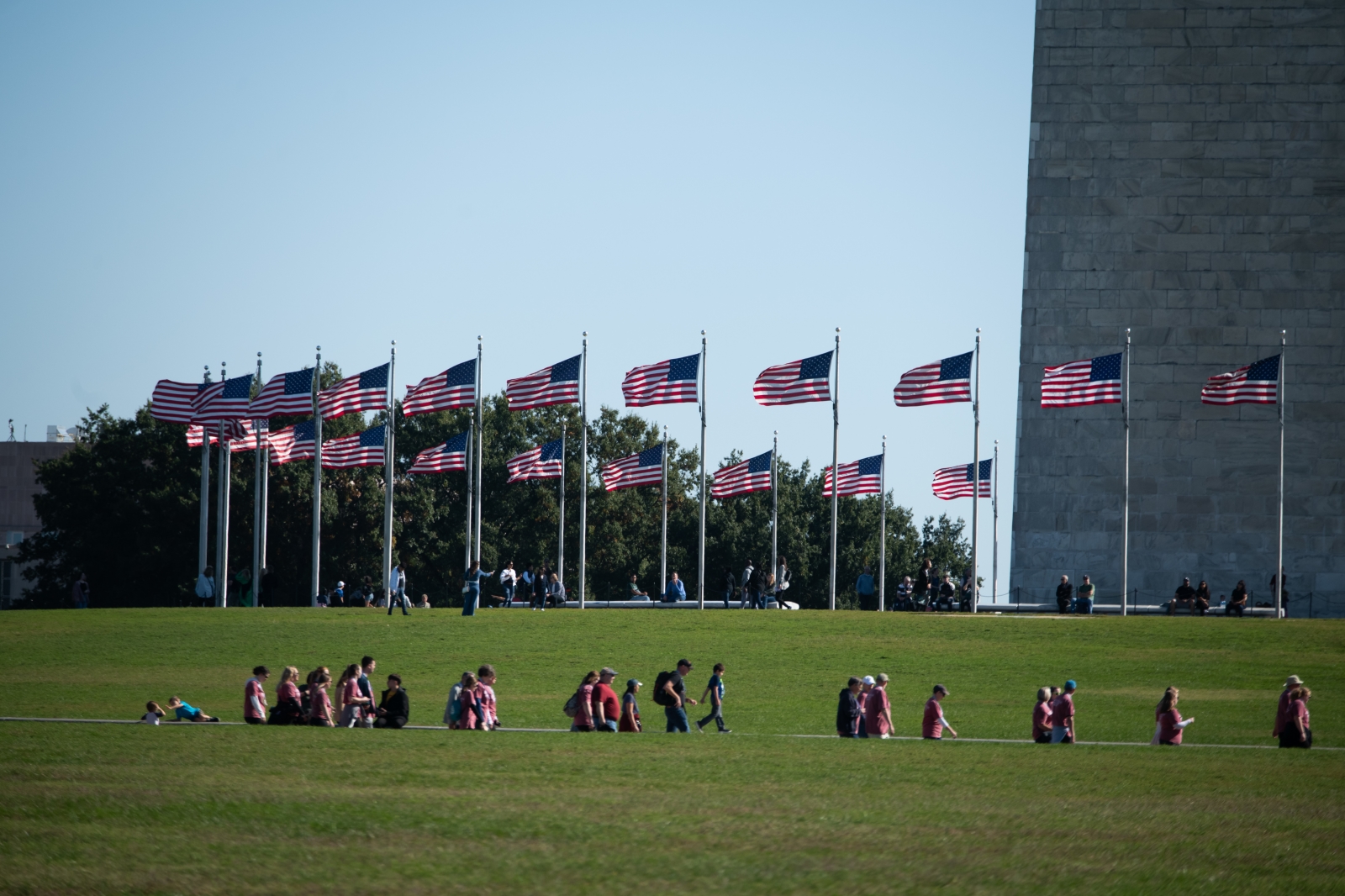 Washington DC (Source: Ming-Tang Huang)
Washington DC (Source: Ming-Tang Huang)
Taiwanese companies are learning from the United States. Behind their offensive in the United States is a common goal: They hope to boost domestic sales by churning out products labeled “made in the USA”.
Taiwanese investment jumps three-fold
Taiwanese investment in the United States has increased three-fold during the past five years, whereas investment in China has markedly decreased during the same period, according to data from the MOEA’s Investment Commission and the Taiwan Stock Exchange’s Market Observation Post System. While total investment by Taiwanese businesses in the U.S. is lower than investment in Southeast Asia and India, it stands out for its rapid growth rate. A large chunk of investment in the U.S. stems from semiconductor and electronics manufacturers, including electric vehicle makers.
In the past, Taiwanese companies limited their domestic presence in the U.S. to warehouses. Now U.S. clients are asking for more. “The carmakers are now looking at three keywords: dual source, security, inventory,” says Kuang-yu Chen, chairman of Sumeeko Industries Co. Ltd., which produces fasteners and assemblies for the automobile industry.
The new focus on source, security, and inventory is owed to the global supply chain disruptions caused by the COVID/19 pandemic, the war in Ukraine, and heightened tensions across the Taiwan Strait. American customers, rattled by geopolitical uncertainties, are seeking to hedge their risks. As the “America first” mindset dominates, suppliers need to take concrete action in response. Amid this trend, suppliers, who are capable of setting up manufacturing plants in the United States, score high when it comes to managing risk.
Regarding manufacturing supply chains, the American business community and the political establishment are on the same page.
 City of Detroit (Source: Ming-Tang Huang)
City of Detroit (Source: Ming-Tang Huang)
Supply chains 3.0 – The new age of economics tied to national security
In June of 2021, the Biden administration announced its 100-day Supply Chain Review Report, assessing vulnerabilities in supply chains in four critical industries – semiconductor manufacturing, high-capacity batteries, rare earth elements, and pharmaceuticals. In February of this year, the White House followed up with the release of six additional supply chain reports, including a stronger focus on ITC industry products such as printed circuit boards, optical fibers, routers, switches, servers, and liquid-crystal displays.
Global management consulting firm McKinsey & Company expects that a revival of American manufacturing could boost GDP by US$275 billion to US$460 billion. “The cards on the table are very clear now: Economics is national security; national security is economics,” notes Rupert Hammond-Chambers, president of the U.S.-Taiwan Business Council.
As the U.S., the world’s largest market, has turned highly protectionist and is waging a technology war against China, and the geopolitical situation has become volatile, a new era, dubbed 3.0, has begun for global supply chains.
Cold War-era supply chain 1.0 was characterized by a clear demarcation of the U.S. and Soviet camps. Western entrepreneurs invested in factories in Japan, South Korea, and Taiwan, taking advantage of the cheap labor and aiming to establish a regional presence for exports to Asian markets. More free-wheeling trade after the end of the Cold War led to supply chain 2.0 with a stronger focus on cost efficiency. Countries offering low costs for wages, land, and raw materials, became the world’s factories.
Given the rivalry between the two largest economies of America and China, the high labor costs that used to be a competitive disadvantage for companies in the U.S. and Europe have naturally become less of an investment obstacle. At the same time, the low-cost countries that used to be manufacturing bases, have evolved into consumer markets. Consequently, Taiwanese companies must adjust their entire business strategy from location selection to investment, management, and production processes.
 EOI's factory in Michigan (Left) and Taiwan's EOI factory(Right) (Source: Ming-Tang Huang)
EOI's factory in Michigan (Left) and Taiwan's EOI factory(Right) (Source: Ming-Tang Huang)
Hammond-Chambers believes that a growing number of Taiwanese companies are viewing the U.S. as a stable investment location. TSMC is building a fab in Phoenix, Arizona, while Hon Hai/Foxconn is planning to produce EVs at its plants in Wisconsin and Ohio. With these giants leading the way, their suppliers are bound to follow suit, relocating production overseas.
Yet manufacturing in a sector that has hollowed out for half a century poses a formidable challenge, comparable to the conquest of the Wild West.
 (Source: Ming-Tang Huang)
(Source: Ming-Tang Huang)
In its supply chain report of February, the U.S. Department of Commerce cited Foxconn’s decision to scale down its investment in the Wisconsin plant from US$10 billion to US$672 million as example, concluding: “The Foxconn endeavor highlighted the difficulties that companies face when attempting to establish manufacturing in the United States including the need to be targeted and realistic in location selection, workforce availability, and government incentives.”
Everest Textile Co. Ltd in North Carolina (Source: Ming-Tang Huang)
In a small town in a sparsely populated area, we witnessed the challenges to the American Dream that might be the real test for Taiwanese companies managing plants in the United States.
North Carolina is the only place in the entire country where a textile enterprise from Taiwan has set up shop. Within an hour’s drive from Charlotte Douglas International Airport in Charlotte, the state’s skyscraper-studded commercial hub, the setting turns rural, with hardly anyone seen walking in the streets. We are in the town of Forest City, where the textile plant of Taiwanese functional fabric maker Everest Textile Co. Ltd is based.
The factory employs 130 people. As deputy section chief, 40-year-old Nathan is in charge of knitting and drafting. He is also the only American employee who is competent to operate the automatic drawing-in machine that is used to execute a new fabric design on the loom.
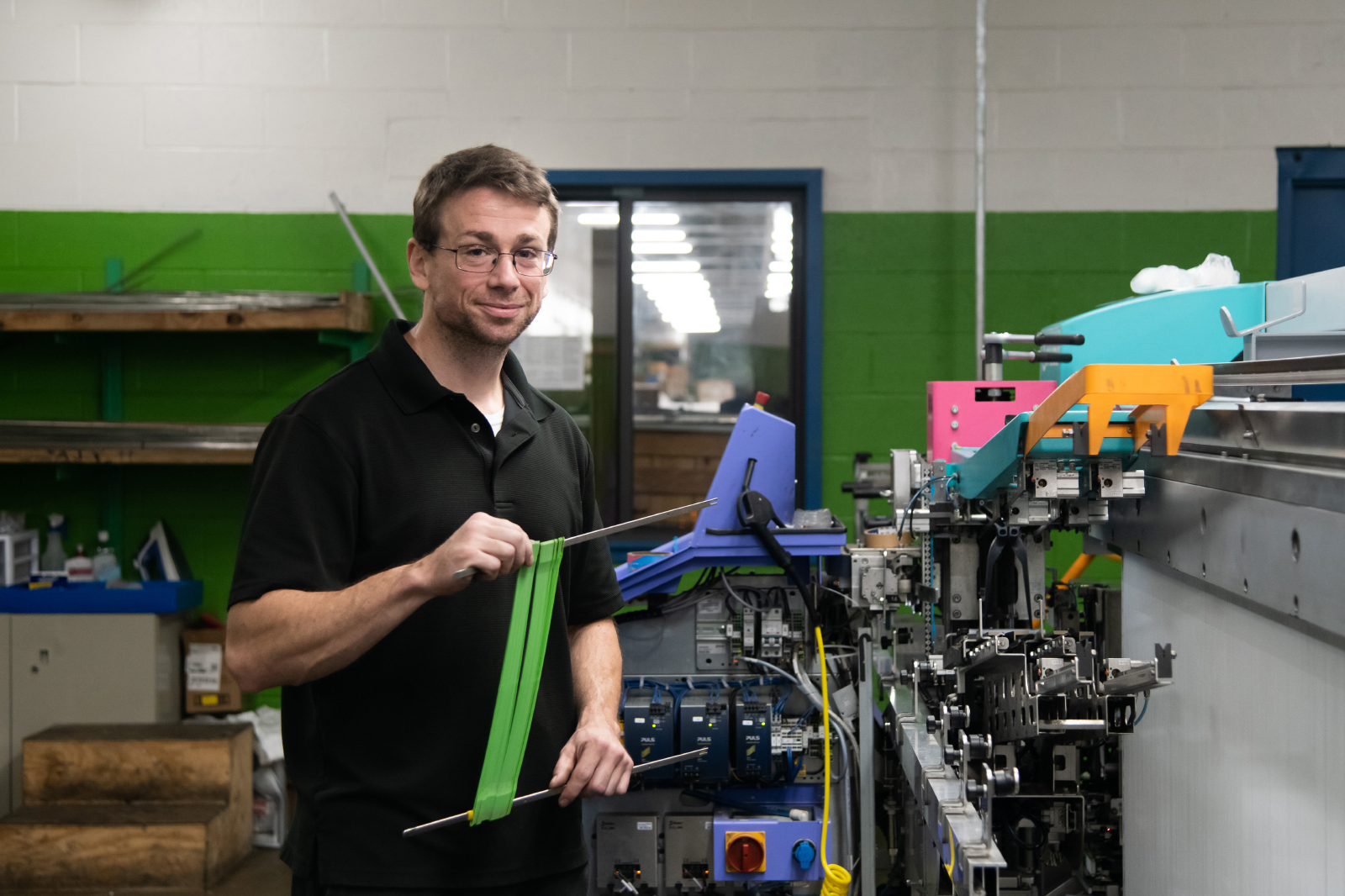 Deputy section chief- Nathan (Source: Ming-Tang Huang)
Deputy section chief- Nathan (Source: Ming-Tang Huang)
Six years ago, Nathan could not even have imagined his current life. In 2016, he saw a newspaper article about a Taiwanese company planning to invest in Forest City, which was exciting news. After all, Forest City had once been the textile industry hub of North Carolina, but had seen its demise decades ago.
“There are no good jobs in this city;, my grandmother used to make textiles, but the factory is gone,” says Nathan, who joined the Everest textile plant from the very beginning. He learned the needed skills from scratch, working with a veteran master who could not speak English, so Nathan learned simple Chinese in the process.
“I am very, very happy that we have this factory,” he assures us in basic Chinese.
Yet for Everest Textile President Roger Yeh, the factory that is Nathan’s beloved workplace almost turned into a nightmare.
Everest Textile produces functional fabrics for the world’s leading sports brands, including Nike, Lululemon, Columbia and the like. So Yeh thought moving production closer to his major customers would make sense.
“Sixty percent of my customers are based in the American market,; wouldn’t serving them without having to go far be very good?” His biggest customer also painted a rosy picture, arguing that American textile mills were mainly producing knitted fabrics because these required less personnel and fewer production steps, whereas few had the capability to make woven fabrics. “If you come to America, you will be the woven king,” the customer promised. But other customers took the opposite view. “There’s no textiles in America anymore; what could you do if you came?” they said, in trying to talk Yeh out of the idea.
Yeh, however, read an opportunity into the warning about the dire state of the American textile industry.
The few remaining textile mills were not producing functional fibers. Their equipment was outdated and the processes labor-intensive. Yeh recalls seeing a factory where dyes were actually mixed manually with a spoon. Few companies were willing to invest in automation and smart technology, which meant that Taiwanese manufacturing was far more advanced. “My cost is definitely lower than theirs, and quality and technology are also good,” is what Yeh thought at the time.
In 2016, Yeh launched an ambitious plan to expand production globally, titled “Shooting for the Moon”. He vowed to establish five garment factories and five fabric factories abroad within three years, focusing on locations in the United States. Full of confidence, Yeh picked North Carolina, America’s former textile industry hub, as his base.
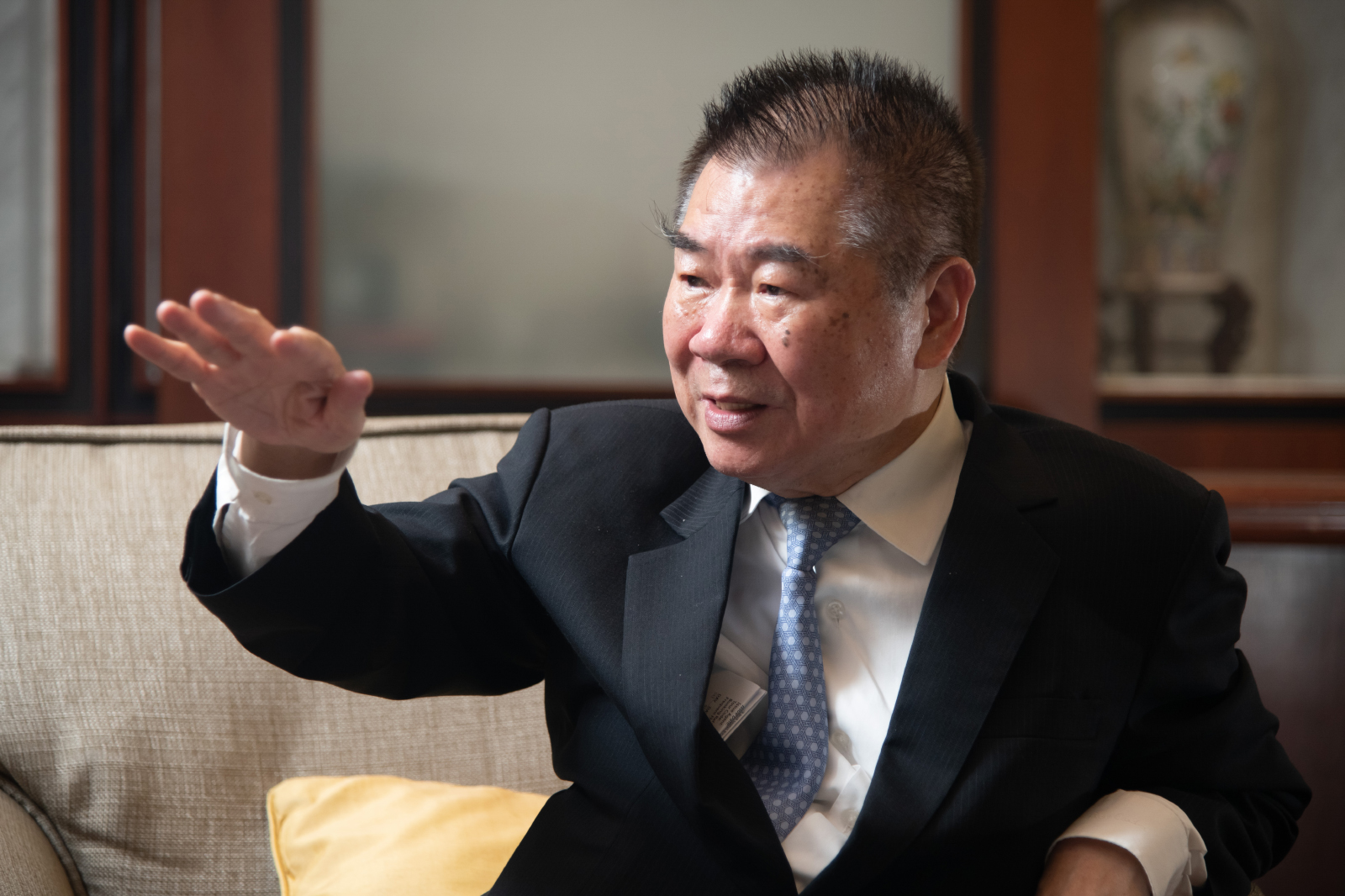 Everest Textile President- Roger Yeh (Source: Ming-Tang Huang)
Everest Textile President- Roger Yeh (Source: Ming-Tang Huang)
At the height of the textile industry boom, North Carolina boasted more than a thousand textile mills. But the local textile industry was subsequently hollowed out due to increasing textile and garment imports from Asia. In the 1980s, bankruptcies and mergers marked the decline of the textile industry, with several hundred textile operations going out of business.
But some foundations of the supply chain are still there. Unifi, an upstream fiber maker, is still based in North Carolina, where the company was founded. And the Wilson College of Textiles at North Carolina State University is renowned for churning out the nation’s best textile talent.
Everest Textile bought an old pallet factory in Forest City, a town of some 7,000 people. After changing plumbing and electric wiring, machines were moved in. More than 100 employees were dispatched from Taiwan to support the project in the beginning.
Since Yeh had made his decision rather suddenly, many of those sent to the U.S. could not even speak English. Mill manager Chen Mei-chuan was one of them.
When trial operations at the American factory began, Everest Textile had already invested NT$2 billion. The customer who had promised Yeh he would become the king of woven fabrics visited the factory three times and was full of praise. The two sides decided to collaborate to develop more than 20 fabrics, which were to be sold to apparel factories in Central and South America.
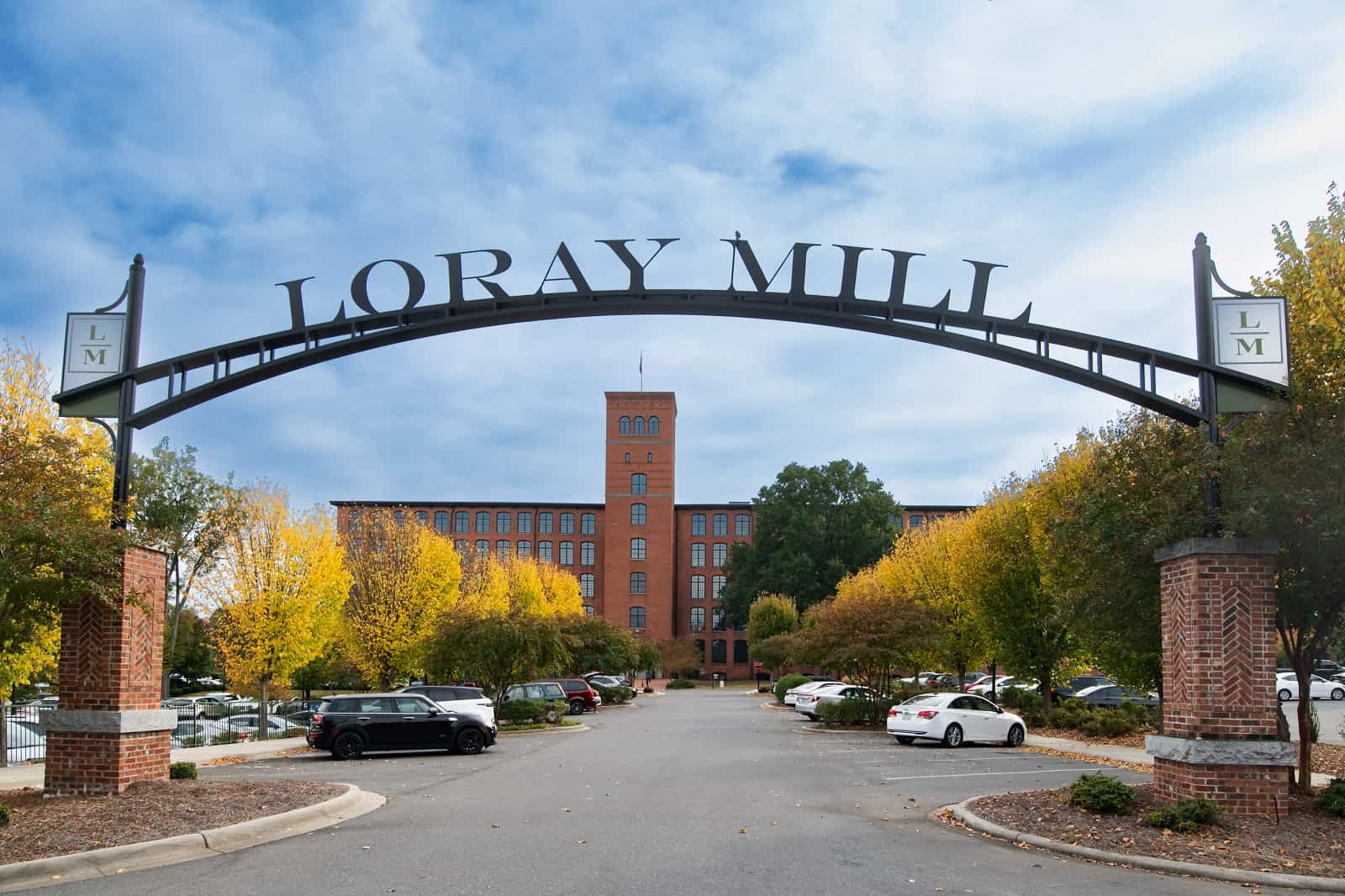 The old fabric plants turned into aparments (Source: Ming-Tang Huang)
The old fabric plants turned into aparments (Source: Ming-Tang Huang)
Competing with rivals in Asia after setting up shop in America
The American mill has a capacity of 2.5 million yards of fabric per month, which is a drop in the bucket compared to what Asia’s giant textile mills spit out. But Everest Textile has a proximity advantage. In Asia, it might take two months to fill an order from yarn preparation to weaving, dyeing and delivery. With the American factory, the delivery period can be shortened to less than half the time. Yeh reckoned that he could recoup his investment within three to six years.
That turned out to be wishful thinking, as Everest Textile’s American customers balked at the American prices.
In the U.S., raw materials cost twice as much as in Taiwan. Finished fabrics were quoted 30-50 percent higher than in Taiwan. Usually, customers are already backing out when the price difference is just 10 percent. Yeh had moved production to the U.S. only to realize that he was competing on cost with Asian manufacturers.
“As it turns out, I had been engaged in wishful thinking,” admits Yeh. With the factory successfully established, the orders fizzled out.
But Yeh was not ready to admit defeat. Given the high investment, the factory could not be left idle. Therefore, he gave the more profitable orders that had been placed with the factories in Taiwan and Shanghai to the American mill. “It was almost like three factories saving one,” Yeh recalls. But the factory in Forest City still posted losses in the order of NT$20 million per month.
The pandemic and uniforms as saviors
Everest Textile changed course. Instead of showcasing functional fibers used in sportswear at trade shows, the focus shifted to industrial and special use fabrics. Military garb, which contributed to the rise of North Carolina’s textile industry, presented itself as a new business opportunity.
At the factory, R&D Manager Huang Kun-tian grabs a sample of military green nylon fabric, which feels very rough to the touch but is highly durable and breathable.
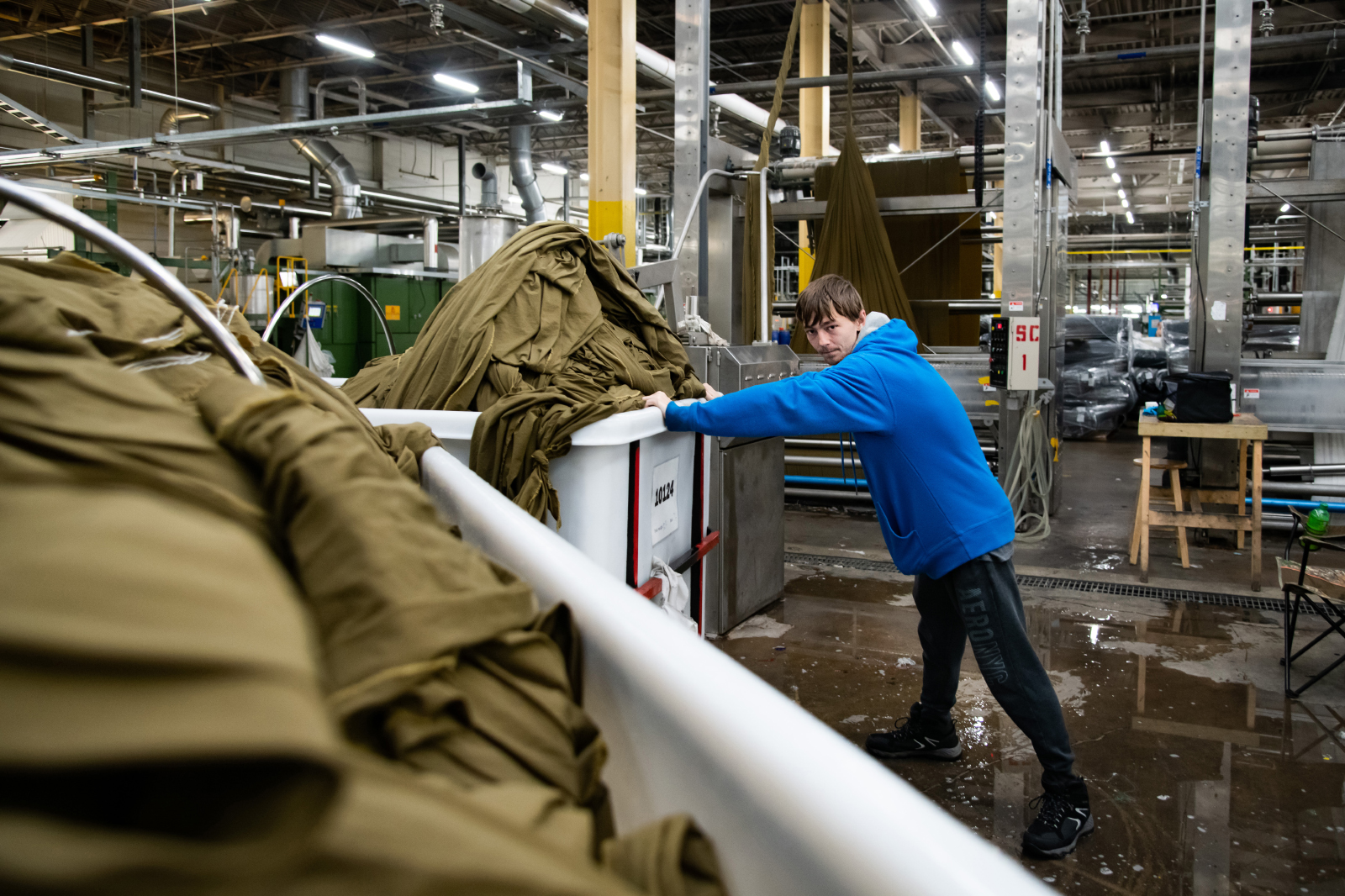 (Source: Ming-Tang Huang)
(Source: Ming-Tang Huang)
American law stipulates that military supplies must be 100 percent “Made in the USA”, which causes suppliers a major headache. There are even examples of suppliers being sentenced for relabeling Chinese products as made in the USA.
Huang explains: “America has only a few factories making plain weave, and there are even fewer that can make elastic plain weave.” Since there are only a handful competitors in this niche, any new customer usually means long-term business. Last year, Everest Textile landed a deal for military uniforms that now account for 20 percent of the factory’s annual revenue.
In early 2020, when the coronavirus pandemic hit the United States and protective clothing and face masks were hard to find, Everest Textile had sufficient idle capacity to quickly produce flat weave fabrics for medical use. Finally, the company benefited from its proximity to the market, snatching up multiple orders at once. In 2000, the company broke even for the first time, making a profit of NT$20 million per month instead of losing NT$20 million per month.
With improved financials, Yeh also resolutely cut down on expenses, reducing the workforce from 340 employees to around 200. Those who remain are happy to work overtime because overtime is paid at 1.5 times the hourly wage.
The factory has made a name for itself thanks to the protective clothing that it supplied at the height of the pandemic. Although pandemic-related demand has fallen, Yeh has meanwhile built a stable base of 60 to 70 small customers by producing mainly untreated fabrics, neither dyed nor printed, for work clothes, school sports teams, and cheerleader groups, as well as packaging materials. The plant has also been picking up orders from other textile mills that outsource work due to the chronic labor shortage in the sector.
In the meantime, even winning the big sports brands as customers no longer seems an impossible task. Last year, sportswear giant Nike ordered fabric for jersey numbers, which helped improve the situation as orders added up to several thousand yards.
So far, investment has not been recouped, but operations are steadily increasing. Presently, the mill is running only at half capacity. “In America, your only option is to look for small- and medium-sized domestic customers. We need at least 300 of them,” estimates Yeh. He is confident that this target can be reached within a few years.
Textile companies should think twice before producing in the US
Should Taiwan’s textile industry regard the United States as a major investment location? Yeh’s answer is a clear No. “I wouldn’t recommend it.”
Having learned some hard lessons over the past six years, Yeh warns, “Don’t rely on what customers tell you.” If he could do it all over again, Yeh would put down every detail, such as terms and conditions, orders, guaranteed profit margins, in black and white when dealing with large customers.
As Everest Textile went to shoot for the moon with its global production expansion plan, it almost ran out of oxygen. Chasing the American Dream not only left a deep mark on Yeh but could also serve as a valuable lesson for Taiwan’s textile industry.
Have you read?
- Taiwan's Hon Hai and EOI invigorate America's Rust Belt
- What does the next half century look like for Taiwanese bicycle leader Giant?
- How AWSC got its groove back and secured orders from SpaceX
Translated by Susanne Ganz
Edited by TC Lin
Uploaded by Ian Huang






